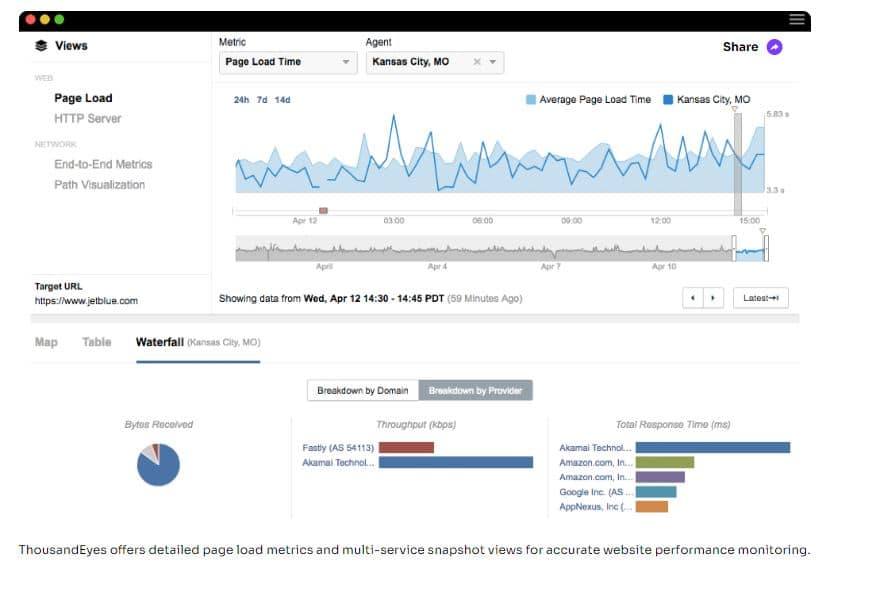Imagine sitting at your desk, feeling very relaxed, knowing that your website content is being monitored and optimized for peak performance. No more sleepless nights worrying about outdated information or broken links—just you, your passion, and a finely-tuned online presence. This is where content monitoring matters. As I delve into the space of content monitoring, I’m excited to share my expertise and firsthand experience with you. In this blog post, I’ll explore the process of content monitoring, along with the benefits and top tools to help you master this crucial aspect of online presence.
Key Takeaways
- Content monitoring is crucial for maintaining a healthy online presence. It involves tracking, analyzing, and managing your website content to ensure it’s accurate, relevant, and up-to-date. This includes everything from blog posts and images to videos and links.
- Effective content monitoring protects your brand’s reputation, enhances user experience, boosts SEO performance, eliminates guesswork, identifies content gaps, and helps you stay ahead of trends. It ultimately leads to a better return on investment (ROI) by focusing on content that drives results.
- The article explores different types of content to monitor, including social media content, SEO & blog content, and webinars & original content. Each type of content requires specific monitoring approaches to understand what resonates with your audience.
- The content monitoring process involves setting clear objectives, choosing the right tools, conducting regular audits, tracking performance, updating and optimizing content, and creating a feedback loop. This structured approach ensures continuous improvement and helps in maintaining a top-notch digital presence.
What is Content Monitoring?
Content monitoring is the continuous process of tracking, analyzing, and managing the content on your website or digital platforms to ensure it remains accurate, relevant, and up-to-date. This includes everything from blog posts and images to videos and links. Essentially, it’s about maintaining the health of your digital content ecosystem.
When I first launched my website, I thought creating great content was a one-time effort. I quickly learned that without regular monitoring, even the best content can become obsolete or broken. A broken link or outdated information can drive away visitors and damage your credibility. That’s when I realized the true importance of content monitoring.
Why Do Content Monitoring?
See infographics below:
Main Types of Content To Monitor
Here are the types of content to monitor:
#1. Social Media Content (Video & Ads)
Monitoring social media content, particularly videos and ads, is crucial for engaging and capturing audience attention. Videos have been shown to increase user engagement and time spent on platforms, making them a powerful tool for brand messaging and product promotion. Ads, on the other hand, drive targeted actions and conversions.
#2. SEO & Blog Content
This type of approach captures the core of content marketing by focusing on getting organic traffic from search engines. SEO and blog content are crucial for increasing a brand’s online presence, establishing authority in a given domain, and providing value to readers through informative and interesting articles. Monitoring SEO performance, such as keyword ranks, search visibility, and on-page optimization, as well as blog content analytics, can identify market optimization opportunities, topic trends, and content gaps.
#3. Webinars and Original Content
Webinars and original content, such as whitepapers, e-books, or in-depth guides, are useful for generating leads, educating customers, and increasing interaction with a more invested audience. These content formats frequently reflect the higher-effort, higher-value end of the content spectrum, providing extensive insights, thought leadership, and industry trends. Monitoring the performance of these materials can help in understanding which topics resonate with your audience, driving engagement, and converting leads into customers.
Benefits of Content Monitoring
The benefits of content monitoring are numerous, but here are some of the most significant advantages:
#1. Say Goodbye to Guesswork
Content monitoring eliminates the guesswork. You’ll have data-driven insights to see what content resonates with your audience and what needs a rework. No more flying blind – you’ll be making strategic decisions based on cold, hard facts.
For example, I once poured weeks into creating a series of blog posts on “Advanced SEO Techniques.” I thought it was pure gold, but the traffic stats told a different story. Turns out, my audience craved more beginner-friendly content. By monitoring the data, I was able to adjust my content strategy and create resources that actually resonated with my readers.
#2. Identify Content Gaps
Content monitoring isn’t just about what’s working – it also reveals what’s missing. You can see what topics your audience is searching for but haven’t covered yet. This is your golden opportunity to fill those content gaps and establish yourself as a thought leader in your niche.
#3. Stay Ahead of the Curve
The digital landscape is constantly evolving. What worked yesterday might not work tomorrow. Content monitoring helps you stay on top of trends and adapt your strategy accordingly. You’ll see what kind of content is performing well across your industry, allowing you to capitalize on new opportunities before your competitors.
I noticed a sudden increase in the popularity of video content. By monitoring the trend, I was able to invest in some basic video editing tools and experiment with creating short explainer videos to supplement my written content. It was a great decision – the engagement skyrocketed!
#4. Boost Your ROI
Content creation is an investment. Monitoring its performance helps you maximize your return on investment. You can see which content pieces generate the most leads or sales, allowing you to focus your resources on the content that truly drives results.
Personally, I use content monitoring as a process to identify the blog posts that were most effective at converting readers into email subscribers. This allowed me to double down on promoting those specific pieces and significantly grow my email list.
Website Content Monitoring
Website content monitoring involves tracking all elements of your website, from text and images to links and metadata. It ensures everything is working as it should and provides a seamless user experience. There are several tools available to help with website content monitoring. These tools can automate the process, making it easier to keep track of changes and updates.
Website Content Monitoring Tools
A website monitoring tool is a specialized software solution that monitors and reports on a website’s performance, availability, and health. Webmasters, IT experts, and organizations of all sizes use these technologies to keep their online presence consistent and operational. Here are the best website content monitoring tools:
#1. ThousandEyes

ThousandEyes provides detailed insights into web performance, allowing businesses to successfully monitor and manage their digital platforms. Its in-depth monitoring capability makes it excellent for those looking for extensive insights into your online performance.
#2. Sematext
Sematext provides a unified approach to monitoring by merging server and website data under one roof. This comprehensive method addresses the need for an integrated monitoring solution that eliminates the trouble of switching between numerous tools to get a complete picture of a digital environment’s health.
#3. UptimeRobot
UptimeRobot provides a focused approach for monitoring website availability without the frills. By focusing on uptime indicators, it provides exact insights to ensure that websites stay accessible to users uninterrupted.
In a sea of monitoring tools, UptimeRobot’s focus on pure uptime tracking stood out. I chose this tool because of its clean style, which is ideal for users who want clarity without being hassled with too many metrics.
#4. Datadog
Datadog is a complete monitoring and analytics platform that gives enterprises real-time insight into their infrastructure, apps, and user experience. It allows organizations to monitor the performance of their website, track critical metrics, and receive notifications for any difficulties or anomalies. Datadog’s functions include server monitoring, application performance monitoring (APM), log management, and synthetic monitoring.
#5. Zipy
Zipy is a digital experience tool for recording user sessions, tracking site errors, and debugging issues. It enables you to detect and address user experience gaps, leading to higher conversion rates, product uptake, and user retention. Zipy allows you to view user events, user environment information, failures, and log details for each session.
#6. Dynatrace
Dynatrace is a powerful monitoring and observability platform that offers detailed information about the performance and health of your apps, infrastructure, and user experience. It provides real-time visibility into the entire stack, detecting anomalies and troubleshooting issues before they affect your users.
#7. Site24x7
Site24x7 provides complete web application monitoring from the user’s perspective, ensuring website performance across numerous geographic regions. Its distinguishing feature is its presence in 110+ geographic locations, allowing businesses to monitor the performance and uptime of their websites from nearly anywhere in the world.
Content Monitoring Tools
Content monitoring tools enable you to track your brand’s meaningful engagements wherever and whenever they occur. There are plenty of monitoring tools available. The list below might assist you in determining which tool is most suited to your brand’s needs.
#1. Sprout Social
Sprout Social provides everything you need to track and act on crucial conversations. For starters, this tool monitors mentions, comments, and keywords across numerous networks, including Instagram, Facebook, Twitter, and TikTok.
The ability to consolidate all of your interactions onto a single platform is a huge time saver. This guarantees that you don’t overlook any notable mentions or leave customer service concerns unanswered.
#2. Hootsuite
Hootsuite’s monitoring tool is part of its comprehensive array of social media management solutions. If you subscribe to one of their plans, you’ll have access to additional tools like scheduling and statistics.
Hootsuite allows you to create endless streams of social media content based on mentions, keywords, hashtags, and locations. Furthermore, Hootsuite interacts with over 100 apps, allowing you to accomplish more from its interface.
#3. Zoho Social
Zoho Social is a social media management dashboard that allows you to publish and schedule posts, track social media activity, and analyze your success.
The Zoho Social dashboard provides real-time updates on how people connect with your brands. I think this is fantastic for events when I want to monitor related social media updates and interact with participants.
#4. Brand24
Brand24 is a powerful yet affordable tool for those looking to delve deeper into social media monitoring. Aside from the major social media platforms, Brand24 searches blogs, forums, and other websites for mentions of your company. Aside from gathering mentions and allowing you to respond, Brand24 examines your social media reach, interactions, sentiment, and more.
#5. Mention
Mention is more than just a content monitoring tool; it also tracks brand mentions across the web, including Yelp, Booking.com, Tripadvisor, and Amazon. On its custom company plan, you can obtain detailed insights and data on your brand mentions.
#6. HubSpot
If you already use HubSpot as your CRM, think about how it may also serve as your go-to content monitoring tool. HubSpot’s features are similar to those of the majority of the products on our list. The platform monitors interaction, engagement, and content performance.
Content Monitoring Process?
Here is a detailed, step-by-step guide on how to do content monitoring effectively, ensuring your digital presence remains top-notch.
Step 1: Set Clear Objectives
Before diving into content monitoring, it’s crucial to define what you aim to achieve. Clear objectives will guide your monitoring efforts and ensure you focus on what truly matters. When I started monitoring my content, my primary goal was to improve SEO. I noticed a significant drop in organic traffic due to outdated posts and broken links.
Step 2: Choose the Right Tools
Content monitoring can be a daunting task without the right tools. Select tools that align with your objectives and make the process manageable.
Step 3: Conduct Regular Audits
Regular content audits are essential to keep your website in top shape. These audits help identify outdated content, broken links, and areas for improvement.
Step 4: Track Performance
Monitoring the performance of your content is crucial to understand what works and what doesn’t. This data-driven approach allows you to make informed decisions.
Step 5: Update and Optimize
Based on your findings from the audits and performance tracking, it’s time to update and optimize your content. This step ensures your content remains relevant and valuable.
Step 6: Create a Feedback Loop
Engaging with your audience and gathering feedback is crucial for continuous improvement. Encourage feedback to identify areas for enhancement. I once conducted a survey asking my readers what topics they wanted me to cover. The feedback I received was invaluable, leading to the creation of several popular posts that directly addressed my audience’s needs.
How I Mastered Content Monitoring
Mastering content monitoring didn’t happen overnight. It took continuous learning and adapting to new tools and techniques. I invested time in online courses, attended webinars, and stayed updated with industry trends.
Gaining hands-on experience was crucial. I worked on multiple projects, each teaching me something new. One of my most memorable projects involved overhauling a website’s content strategy. By implementing a robust content monitoring system, we not only improved user engagement but also saw a significant boost in SEO rankings.
One challenge I faced was dealing with a large volume of outdated content. It was a daunting task, but by prioritizing high-impact areas and gradually working through the rest, we managed to turn things around. This experience taught me the importance of perseverance and strategic planning in content monitoring.
Ready to ensure your content is fresh, engaging, and SEO-optimized? Our content audit checklist makes it simple! This free downloadable resource provides a step-by-step guide to evaluating your website content across various categories. Download yours now and watch your content performance soar!
What are the 4 basic steps to monitoring?
Monitoring is an essential part of content monitoring, and it can be broken down into four basic steps:
- Tracking
- Detecting
- Analyzing
- Acting
How does content monitoring work?
Content monitoring involves assessing how well your articles, landing pages, social media posts, and other content perform. And observing your competitors’ performance to gain insights that can improve your efforts.
Content monitoring is an ongoing process. By regularly analyzing your data and taking action, you create a continuous cycle of improvement. Your content gets better, attracts more visitors, and ultimately achieves your online goals.
Conclusion
Content monitoring can be a game-changer for your online content strategy. By using the right tools and following the tips I’ve shared, you can gain valuable insights, stay ahead of the curve, and create content that truly resonates with your audience.
So, are you ready to ditch the guesswork and unlock the power of content monitoring? Don’t wait any longer – start implementing these strategies today and watch your online presence soar!
But wait, there’s more! The world of content monitoring is constantly evolving. What are some of your favorite tools and techniques? Share your experiences and questions in the comments below – let’s keep the conversation going!
Related Articles
- CONTENT MARKETER JOB DESCRIPTION: Key Responsibilities and Skills
- Evergreen Content Strategies: How to Keep Your Business Blog Relevant and Engaging
- TikTok Content Creation: A Detailed Guide & Best Strategies in 2024
- Best User Generated Content Platforms for Your Brand in 2024: How to Choose the Best One
- 17 Must-Have Content Creation Tools for Social Media Managers






